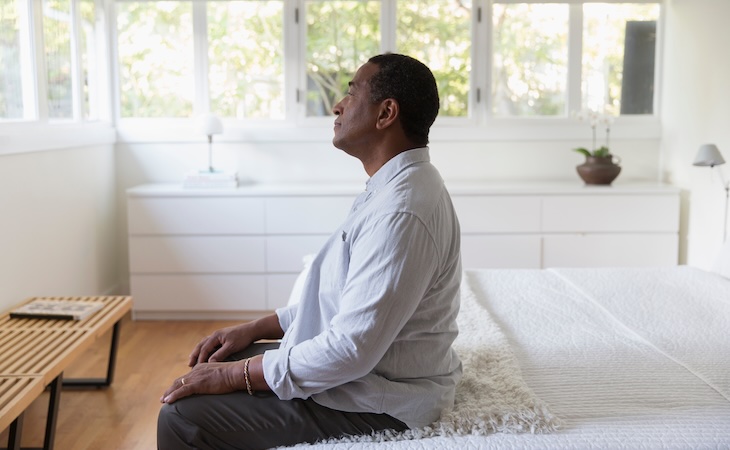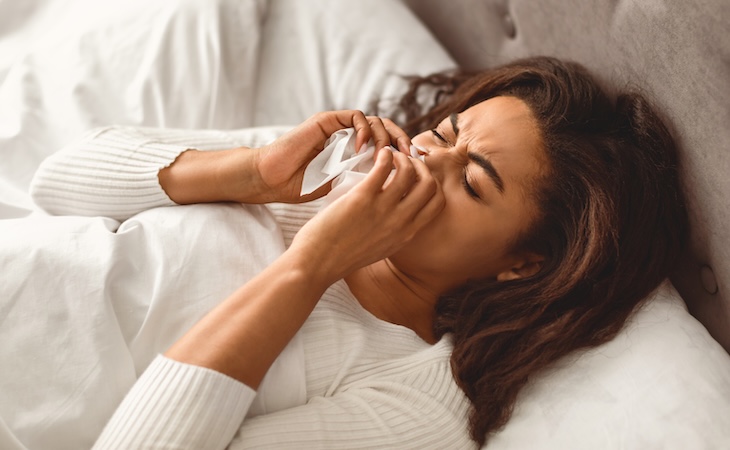Trying to sleep in a noisy environment can be next to impossible. Luckily, earplugs provide the perfect solution for getting a good night’s sleep despite the noise.
Here, we’ve put together a comprehensive guide to using earplugs for sleeping.
Are earplugs safe to wear while sleeping?
Wearing earplugs to bed is safe, but there are a few things to consider before buying a pair.
Over time, using earplugs can push earwax deeper down into the ear canal, causing earwax buildup. This can result in temporary hearing loss and tinnitus (chronic ringing in the ears). Inner ear infections can also become a problem when bacteria grow on dirty earplugs.
The solution: If earwax buildup becomes an issue for you, visit your doctor. They can remove it in-office and suggest over-the-counter ear drops so you can safely soften the wax at home.
To clean reusable earplugs, meanwhile, soak them in a small bowl of hydrogen peroxide, removing any dirt or earwax on the surface. Rinse with cold water and gently press dry with a towel. Let the earplugs fully air dry before using them again.
Types of earplugs for sleeping
What are the best earplugs for sleeping? There are quite a few options to choose from. The type you select should depend on your needs, preference, and, of course, your budget.
Disposable earplugs
Foam earplugs are the most common form of disposables. They might not provide a perfect fit, but disposable earplugs are comfortable and pretty easy on your wallet. The downside is that the porous makeup provides the ideal environment for bacteria to grow, leading to ear infections. Disposable earplugs should be ditched after one or two uses.
Product pick: Mack’s Ultra Soft Foam Earplugs come in a bottle of 100 (50 pairs) for under $10.
Noise-canceling earplugs
Noise-canceling technology might be a godsend for anyone seeking sound sleep in a noisy environment. These types of earplugs offer different levels of noise-canceling modes, an adjustable fit, and decent battery life. Expect sticker shock, though, as noise-canceling features can cost upwards of $300 depending on the brand.
Product pick: Bose Sleepbuds II (which we featured in our guide to the best Cyber Monday tech deals) clock in at under $300. They sync with Bose’s app, allowing you to listen to ambient sounds and mask out disruptive ones. Plus, they have a snug yet comfortable fit.
Reusable earplugs
The good thing about reusable earplugs? They’re highly sustainable, can be reused multiple times, and are low-cost. Silicone is an excellent material for this type of earplug. It allows for a comfortable fit since it can be molded to the outer ear cavity.
Product pick: Hearprotek Sleeping Earplugs cost under $20 and are made of soft, washable silicone. The ergonomic double-layer design enhances soundproofing. As a bonus, they come with a carrying case and backpack hook.
Bluetooth earplugs
When earplugs come with Bluetooth capabilities, that means you can listen to calming ocean waves or the light patter of rain to help lull you to sleep. You can control the volume, and battery life usually lasts throughout the night.
Product pick: TOZO T10 Black Bluetooth Wireless In-Ear Headphones can be used to listen to ambient sounds via Bluetooth and are comfortable enough to sleep in. They also come with a carrying case for storage and travel.
Custom earplugs
Custom earplugs provide a personalized fit. They’re typically made from a plastic material that’s easily molded to your ear shape. All you have to do is place the molds in hot water for a few minutes, then shape them to your ears.
Product pick: Radians Custom Molded Earplugs are easy to use and cost less than $20.
Earplug effectiveness
Earplugs are a great option to get some much-needed sleep. (According to one study, earplugs combined with a sleep mask may result in even better slumber quality.)
To get the best results, follow these simple instructions when using earplugs for sleeping:
- Wash your hands thoroughly.
- Pull on your earlobe to create a wide space for the earplug to fit into.
- Carefully insert earplug far enough into the ear canal to provide a comfortable fit. Do not push to the point of pain.
If using foam, wax, or custom earplugs, shape them until they’re narrow enough to fit into your ear. Wait until the earplug expands to fit your ear canal. And remember to trash those disposable earplugs every few days.
The bottom line: No matter what type of earplugs you choose to go with, remember to stick to a regular bedtime and aim for at least seven hours of sleep per night.
FAQs
Is it healthy to sleep with earplugs?
Wearing earplugs to bed can be healthy if they’re helping you get adequate rest—however, there are a few things to consider before buying a pair. For example, over time, they can push earwax deeper down into the ear canal, causing earwax buildup that can lead to temporary hearing loss and tinnitus (chronic ringing in the ears). Inner ear infections can also become a problem when bacteria grow on dirty earplugs.
What other suggestions do you have to block out loud snoring?
Besides earplugs, you can use a white noise machine in the room to help block out some of your partner’s snoring or you can sleep separately to completely avoid it. You can also help your partner sleuth out the snoring source to potentially reduce or get rid of it for good.




